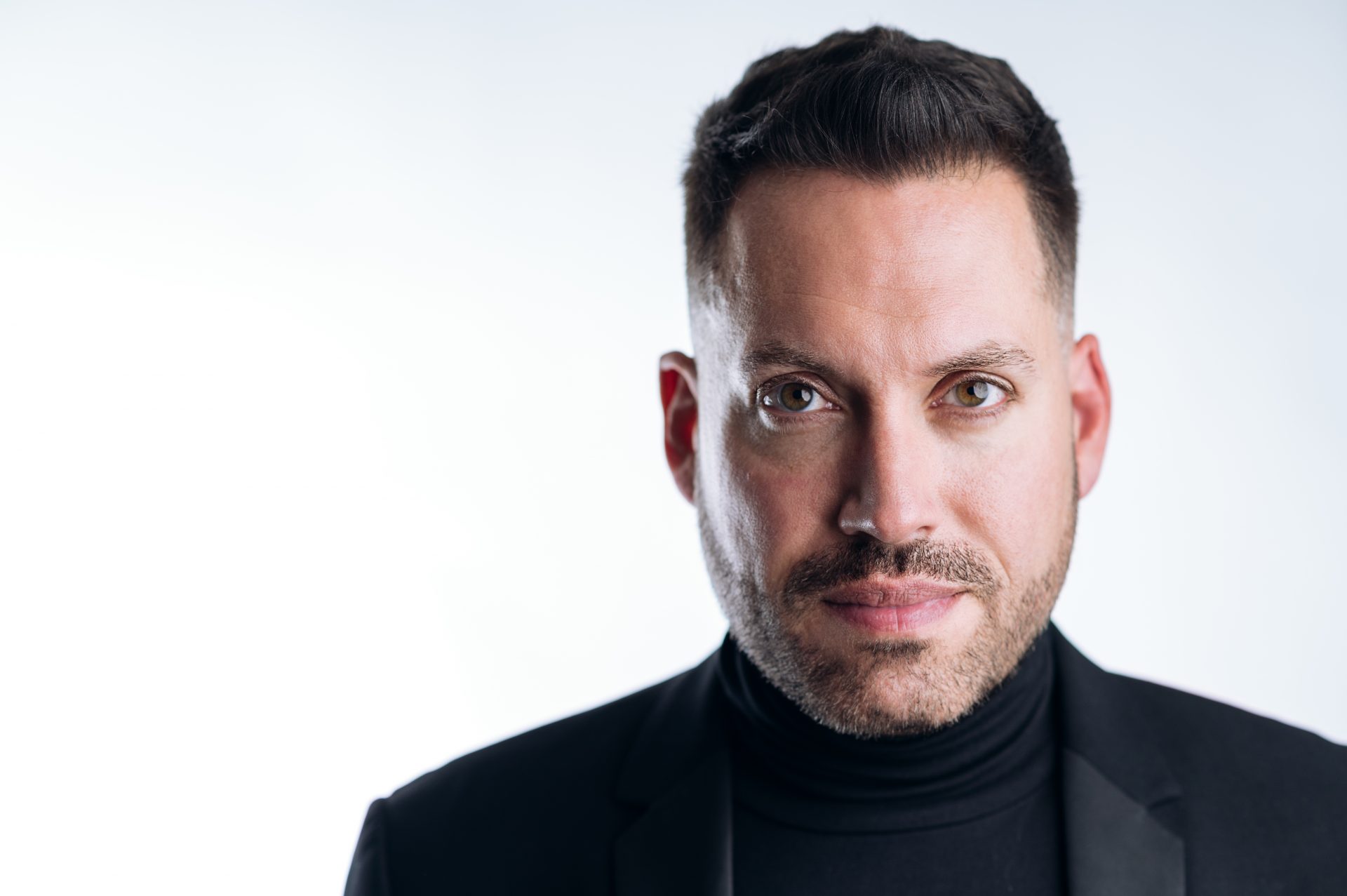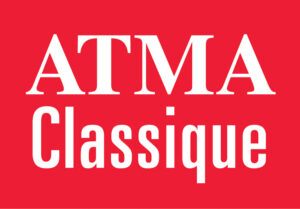
Jean-Sebastien Vallee is an internationally recognized conductor, scholar, and pedagogue.
Dr. Vallée is Associate Professor of Music, Director of Choral Studies, and Coordinator of the Ensembles & Conducting Area at the Schulich School of Music of McGill University. He is Music Director of the Ottawa Choral Society, and as Director of the renowned choir of the church of St. Andrew & St. Paul in Montréal, recently recorded Distance, his third album for ATMA Classique.
Distance is conceived around the theme of isolation that is due in part to the Covid-19 pandemic. Featuring the choir of the church of St. Andrew & St. Paul singing a cappella, the program explores different aspects of isolation and silence: solitude, reflection, but also determination and breaking the silence. Distance includes choral pieces ranging from Bach motets with continuo to 20th and 21st century repertoire by Samuel Barber, Edward Elgar and several contemporary composers. Distance will be released on April 2, 2021.
We sat down with Jean-Sebastien to talk about the experience of making this recording:
Where did the idea of creating a program on the theme of “distance” come from?
I started thinking about this program shortly after the COVID-19 pandemic began. I was deeply affected by the situation when in March 2020 the world came to a standstill, and the voices of millions of singers worldwide were abruptly silenced. The consequences of the pandemic were disastrous, and I started feeling an oppressive sense of isolation. Creativity and music, although nearly impossible at the time, appeared to be the only releases from this unprecedented situation.
The inspiration for this recording was born out of pandemic-induced hurdles. Precisely at the moment when music seemed to be at a full stop, the need to create and express seemed most acute. The idea was not to return to singing and create a recording despite the situation, but rather fully engage with the situation. I knew it would be logistically, musically, and emotionally difficult to record an album of choral music amid the pandemic, but it felt necessary to document and create a musical memento of this situation. And while the human voice was the riskiest medium, it seemed to be the most appropriate to describe the vulnerability and the complex human experiences shared all around the world.
After an initial repertoire brainstorm, it became evident that the situation wasn’t just negative and dramatic. We were all certainly experiencing the concept of distance through the lens of absence, separation, and physical and spiritual distance, but the themes of hope, resilience, the appreciation of simple pleasures, and the development of our sense of community and common purpose were also truly relevant to the situation and are expressed in the recording.
The recording was made after many months of musical separation and silent concert halls. Describe the emotions that you experienced at your first in-person rehearsal as the sound of live singing filled the church.
It was truly magical. We had been working on several small projects leading to the recording, but the first read-through with the full group was truly emotional. One of the first pieces we rehearsed was Lux Aeterna, a choral adaption of Elgar’s Nimrod, and when we reached the climax of the piece, we could barely hold back our tears. Even with the physical distancing, we could sense the power of the music linking us all together. Although mostly joyful, the first rehearsals for this project were also stressful. Even though we were working under a really strict sanitary protocol, we knew there were some risks in singing together. I think the interpretation of the music recorded on the album certainly shows the mixed feelings, ranging from joy to fear, that were experienced by the ensemble.
What makes choral singing such a powerful, uplifting, and sustaining force?
The human voice is the simplest and yet one of the most complex musical instruments. I always describe a choir as a micro representation of an ideal society, that is, many individuals with different and unique voices working together diligently to create harmony and unison of intent. Being both vulnerable and powerful, the human voice, especially in a cappella music, speaks directly to the soul of the listener, and this is why choral singing is so moving. There is also no choral music without a strong sense of community within the ensemble, and this is what makes choral ensembles so unique and resilient.
The recording sessions took place at the height of the second wave of the pandemic with strict distancing and health and safety protocols in place. What was that experience like for you and the musicians?
Distancing was obviously a challenge. Singers are used to be able to easily hear each other, but this was almost impossible since the choir was spread out in the nave to follow our strict distancing protocol. However, this situation proved to be a great exercise of trust – each singer had to be confident and independent in their performance while trusting their colleagues without clearly hearing them. After a few challenging first rehearsals, I noticed that the choir was singing even more together than before – there was a clear sense of musical leadership that was emerging from within the ensemble and making it more cohesive than ever. We even joked that we should keep singing following the distancing protocol even when it is not a requirement anymore!
The other main challenge was to sing with a mask on. Singers only took off their masks when a take was being recorded. In all other instances (rehearsals, notes, etc.), the ensemble remained masked. Obviously, singing with a mask affected breathing, tone, and enunciation, which made the rehearsal process more challenging but also formative for the ensemble.
The program for Distance juxtaposes choral music selections from the 17th century with 20th– and 21st-century works. What was the rationale behind this juxtaposition?
We wanted to evoke the concept of distance in all possible ways. Having musical selections ranging several centuries was one way of illustrating temporal distance. This concept is also demonstrated in 21st-century compositions bringing together new and old compositional techniques – this is the case in the last piece of the album, Laudibus in sanctis by Latvian composer Uģis Prauliņš, where rock influences are superimposed with medieval sonorities.
In addition to time, the repertoire also explores physical distance with the use of several works for double choirs. One of them is by Sulpitia Cesis, a 16th-century cloistered nun from Modena, who composed an important collection of motets. Cesis’s music, which was influence by her secluded lifestyle, seemed to be the perfect fit to evoke our 21st-century pandemic situation.
Tell us about how you selected the more contemporary compositions, including Ni de l’est ni de l’ouest, dedicated to the memory of the victims of the 2017 Québec City Mosque shooting.
The purpose of this recording was to create a memento of the situation experienced by the members of the ensemble. It was, therefore, important to feature works by composers from historically underrepresented communities and to address societal issues related to distance and division. This is why I decided to include Ni de l’est ni de l’ouest, a piece commissioned by the Montreal composer and choir member, William Kraushaar. This piece merges poems by two Islamic scholars, Saadi and Rumi, with the text of Psalm 133 and the final line of the Agnus Dei (grant us peace). This work was composed in remembrance of the victims of the 2017 Québec City Mosque shooting and calls for the building of the bridges, for the distance to be removed, that is, “we are all members of one another and created from the same matter. If a member is suffering, others will not know happiness.”
How has your relationship to your work as a conductor changed as a result of the pandemic?
Like most musicians, the pandemic made me realize how important music was to me. My work as a conductor is more than what I do for a living. It is in fact who I am and how I express myself – it’s truly in my DNA.
The past year has taught me that I too often take my musical activities for granted. Being silenced for months allowed me to realize how important creation of music is to me and our society. When we resumed our choral activities in the fall, I discovered a renewed sense of gratitude for what I do and especially for the people I work with. Singing creates community, and it is a powerful motor of change that I find more relevant now than ever. In these difficult times, this recording project has brought us together, despite our enforced physical distance, and I’m thrilled to now welcome the listeners to our distanced musical universe.
Interview by Luisa Trisi, Big Picture Communications
